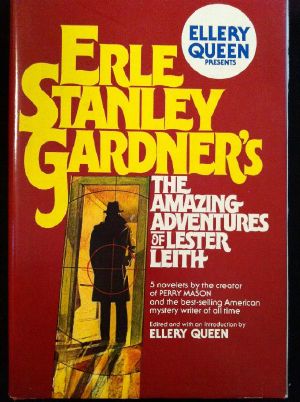The Amazing Adventures of Lester Leith (1980) SSC

- Authors
- Gardner, Erle Stanley
- Publisher
- Davis Publications
- ISBN
- 9780803716537
- Date
- 1980-04-01T00:00:00+00:00
- Size
- 0.77 MB
- Lang
- en
The Lester Leith tales Gardner wrote in the 1930's and 40's seem completely different from much of his pulp work. Gardner's Lester Leith stories contain puzzle plots. At least 4 of the 5 that have been reprinted out of the circa 75 Gardner wrote for Detective Fiction Weekly, in The Amazing Adventures of Lester Leith, a 1980 collection edited by Ellery Queen.
The puzzle plots are usually fairly well done; in and of themselves, they could support a 15 page story of the kind Agatha Christie was so good at. On top of this, Gardner consistently adds another feature: the development of an elaborate con by Lester Leith, designed to both solve the crime, and steal the ill gotten gains of the criminal. This con job is full of surreal and baroque elements; it tends to be wild, comic and bizarre. This con job is very different from the-interfere-in-the-criminals'-scheme approach that Gardner used in his Ed Jenkins tales, or in the Patent Leather Kid story, "The Kid Clips a Coupon" (1934). Rather, it is a full fledge con. The reader is privy to elements Leith will use in the scheme, but not the scheme itself, and now has a second puzzle to unravel: what is Leith up to? These two puzzles interact in interesting ways, as they are both gradually unraveled by the story. Leith often explains the deductive logic he used to deduce the criminal and understand his crime. This deduction seems almost as relentlessly logical as Sherlock Holmes or Ellery Queen, and shows a surprising commitment by Gardner to the full paradigm of the puzzle plot, not just a mystery, but also its fair play solution through deduction from clues. While there is a detective (Leith) solving the first crime; there is no detective figure solving the mystery of Leith's activities. These activities simply unroll in front of the reader's eyes.